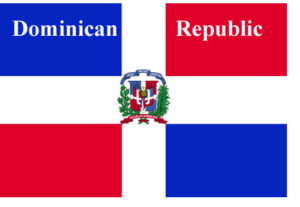 The Dominican Republic recognizes that education is a basic human right that should be available for all of its citizens. In order for the country to prosper, each person should receive the education required for the development of their own personality and the training needed for the specialization and career of their choice.
The Dominican Republic recognizes that education is a basic human right that should be available for all of its citizens. In order for the country to prosper, each person should receive the education required for the development of their own personality and the training needed for the specialization and career of their choice.
In the Dominican, education can be provided by the government or by non-governmental institutions. These non-governmental institutions must be in compliance to the established educational guidelines administered by the National Education Counsel and the Department of Education.
Primary school in the Dominican Republic lasts for 8 years and is compulsory for students 6-14 years old. These 8 years are divided into two 4-year cycles. During the first cycle (the basic cycle), the focus is to promote integral human development in different dimensions, including intellectual and socio-emotional. During this cycle, students are taught basic elements of culture, as well as the basic knowledge of nature, its conservation, personal hygiene standards, and health preservation. During the second cycle, students focus on developing their fluency in Spanish, while also developing a greater interest in research and scientific knowledge, technology, the humanities, communication, information, and various forms of art.
Secondary education is also comprised of two cycles. The first cycle lasts for 2 years and it is the same for all students, ages 14-16. The second cycle offers 3 options students can take based on the specialization of their choice. These options are: a general route, technical route, or an artistic route. The goal for these secondary educational routes is to provide students with fundamental competencies which will prepare them for the working field they choose or continuing education in a higher institution. At the completion of the general academic program, the student is awarded a Bachillerato. If the student has chosen to take the technical or artistic route, the student earns a Bachillerato en Ciencias y Letras.
Secondary school students are graded as follows:
| Letter Grade | Scale 1 | Scale 2 | Grade Description |
|---|---|---|---|
| A | 90 – 100 | 96-100 | Sobresaliente (Excellent) |
| B | 80 – 89 | 85-95 | Muy Bueno (Good) |
| C | 70 – 79 | 76-85 | Bueno (Fair) |
| D | 60 – 69 | 70-75 | Suficiente (Poor) |
| F | 0 – 59 | 0-69 | Insuficiente (Fail) |
| * Passing is a grade of 60% or higher. | |||
The curriculum for primary education consists of Spanish, mathematics, social sciences, natural sciences, physical education and art. For the second cycle of Primary education, students are offered foreign language classes (French and English) as well as religious studies. Secondary schools cover the same range of courses offered in the primary education curriculum, as well as vocational studies and courses tailored to the technical or artistic track of the student’s choice.
The higher education system is comprised of technical institutes and universities. Technical institutes offer courses for higher technician level programs of two to three years. The universities provide technical careers, undergraduate, and graduate degrees. Undergraduate degree programs can last from four to six years, while graduate and master’s degrees including specialized studies last for one or two years. There are also doctorate programs provided, which can last between two to four years.
There are currently 35 universities in the country, including the Universidad Autónoma de Santo Domingo. The Universidad Autónoma de Santo Domingo is the country’s only public university; with a dozen branches around the country in addition to the main campus located in the nation’s capital, Santo Domingo.
© 2025 Gaetranslations | Terms & Conditions
Website by: Timefortheweb